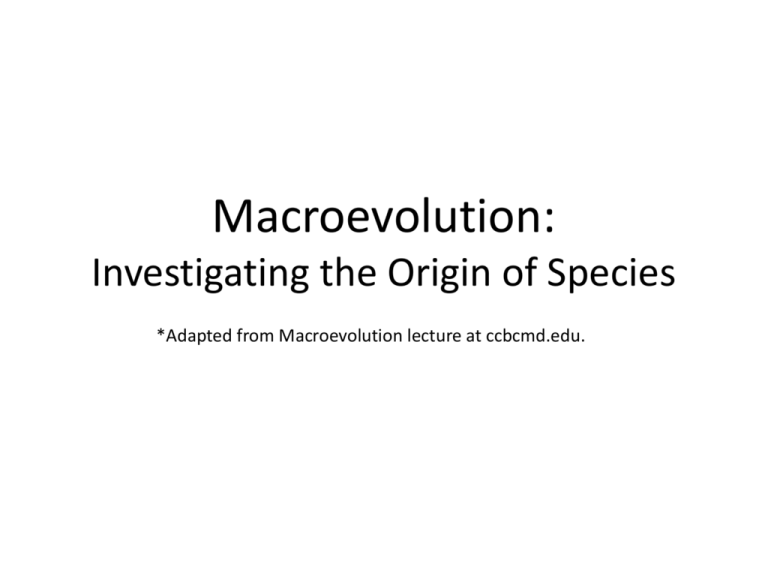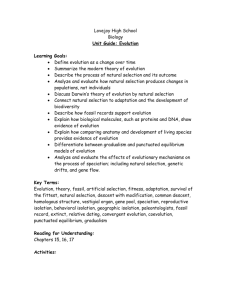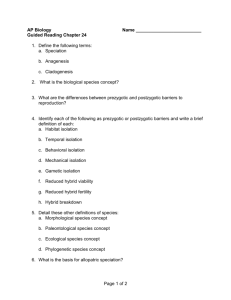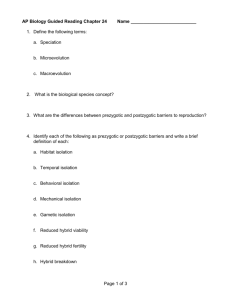D.2 Species and Speciation Notes - Twanow
advertisement

Macroevolution: Investigating the Origin of Species *Adapted from Macroevolution lecture at ccbcmd.edu. Learning Targets: Distinguish between anagenesis and cladogenesis. Define biological species (Mayr) and describe limitations of the concept. Distinguish between prezygotic and postzygotic mechanisms of reproductive isolation. Speciation • Anagenesis – One species replaces another – No net change in number of species • Cladogenesis – One species branches off from an existing species – A net increase in number of species (diversity) Biological Species Concept • A species is a group of individuals whose members have the potential to interbreed with one another in nature to produce viable, fertile offspring but cannot successfully interbreed with members of other species • Reproductive isolation prevents breeding with other species Problems with the biological species concept… • Not helpful in determining species in fossil record • Doesn’t account for asexual organisms • Scientists can’t observe all potential interbreeding (in nature or in the lab) Reproductive Isolation: Prezygotic Barriers Impede mating or fertilization: 1. Geographical isolation 2. Behavioral isolation 3. Temporal isolation 4. Hybrids Geographical Isolation: Species are separated by physical barriers. Example: Spotted Owl Species Scientists believe that glaciers during the ice age separated the two populations of owls. • Behavioral isolation – Species choose mates based on different behaviors – Examples: bird songs or mating dances Temporal Isolation 1. Species mate at different times of year 2. Species mate at different times of day Hybrid Inviability • Example: embryos of sheep and goat hybrids usually die in early development, seeds of some hybrids of peanut plant species will not develop Hybrid Sterility Horse (2N=64) X Donkey (2N=62) = Mule - Mule (hybrid of the two species) is sterile Hybrid Breakdown • Offspring of hybrid (F2 generation) not able to survive or reproduce • Example: sunflower hybrids – 80% of F2 generation are defective in some way and cannot reproduce successfully Allopatric Speciation • Allo = other, patric = homeland • Speciation in geographically separate populations • Example: speciation of squirrels after separation by the Grand Canyon, speciation of reef fish separated by a land bridge Adaptive Radiation • Evolution of many diversely adapted species from a common ancestor – common on island chains •Example: Hawaiian honeycreepers evolved from one common ancestor Sympatric Speciation • Sym = same, patric = homeland • Speciation in over-lapping populations • Example: speciation of stickleback species in one same lake due to food specialization, speciation of cichlids due to mate choice Polyploidy in Plants • Speciation of plants with extra chromosomes due to abnormal cell division, or hybridization of two different species • Polyploids may be able self-fertilize or cross with other polyploids Gradualism vs Punctuated Equilibrium Which is which? • Small continuous changes over time • Rapid change followed by periods of stasis (little or no change) Gradualism vs Punctuated Equilibrium Which is which? • Small continuous changes over time = Gradualism • Rapid change followed by periods of stasis (little or no change) = Punctuated Equilibrium






